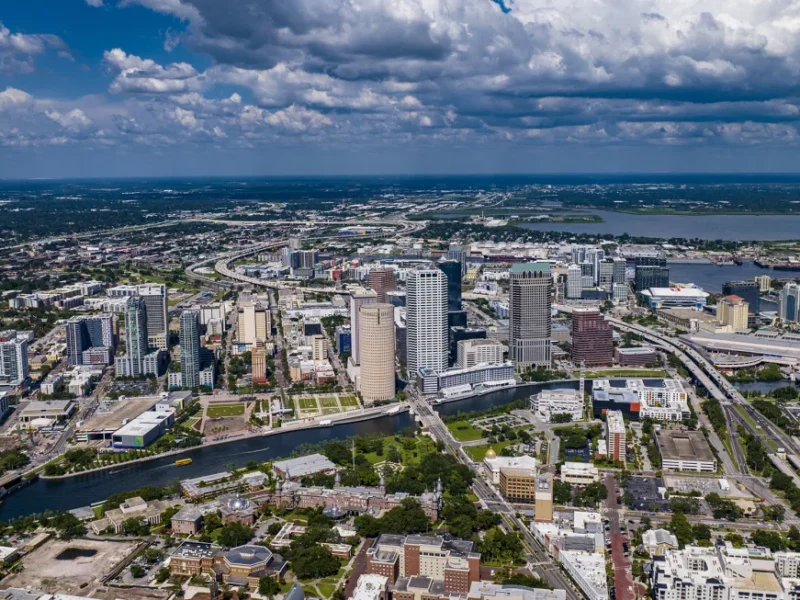Inflation rates can significantly vary between different regions, influenced by factors such as home construction and economic development. The Tampa-St. Petersburg-Clearwater area in Florida recorded the lowest inflation rate among 23 metropolitan areas in the United States, with an annual rate of 1.8% as of May. This marks a significant drop from the previous year, when it was among the highest. The increase in homebuilding in the Tampa Bay region has played a key role in reducing housing costs and overall inflation.
Conversely, the Honolulu metropolitan area in Hawaii reported the highest inflation rate in the nation, at 5.2% annually as of May. Hawaii’s chronic housing undersupply, exacerbated by the catastrophic Lahaina wildfires, has led to a severe housing affordability crisis. This has driven inflation higher as housing supply struggles to meet demand. Similarly, New York City, which once had the lowest inflation rate in the country, now faces inflation rates above 4% due to tight housing market conditions.
Nationwide, the inflation rate stands at 3% annually, as shown by the latest Consumer Price Index data.
“High inflation is observed in some markets while others are unaffected due to new housing supply impacting prices year over year,” stated Barbara Denham, senior economist for cities and regions at Oxford Economics.
Housing costs account for about one-third of the Labor Department’s Consumer Price Index (CPI), a key measure of inflation. The CPI’s shelter index includes tenants’ rents and homeowners’ equivalent rent, which estimates what homeowners would pay to rent their homes. Although inflation has significantly decreased from the 40-year highs of two years ago, housing costs have remained persistently high.
This has been a major challenge for the Federal Reserve in its fight against inflation, but the situation has recently improved. After stagnating earlier this year, price pressures eased in the second quarter, bringing the Fed closer to cutting interest rates, which are currently at a 23-year high. Wall Street largely anticipates that the Fed will implement the first rate cut in September.
Tampa is experiencing strong economic growth.
The Tampa Bay area is experiencing rapid economic growth, largely fueled by an influx of new residents in recent years. During the Covid-19 pandemic, retirees and remote workers moved away from costly coastal cities to places with warmer climates and a lower cost of living. According to Census data, Florida was the fastest-growing state from 2021 to 2022.
“Tampa is expanding quickly, with significant construction underway due to ample land in surrounding regions like Hillsborough County and Pasco County,” said Brian Adcock, chair of the Tampa Bay Chamber. “The increase in neighborhoods is a notable difference from Miami.”
However, this growth has led to challenges. Housing costs in Florida, including Tampa, have surged as new residents have purchased homes. The Tampa metro area saw a record-high annual inflation rate of 11.3% in 2022, and inflation remained high the following year. Unlike Miami, which continues to face inflation rates above the national average, Tampa has seen a boost in development.
A recent Redfin report noted a 6% drop in median rent prices in Tampa in June compared to the previous year, the largest decline on record. This decrease is attributed to a surge in apartment construction. Willy Nunn, president and CEO of Homes By Westbay, mentioned that while homebuilding remains steady with high demand, there is now notable momentum compared to pre-pandemic times.
Adcock also highlighted the significant transformation of downtown Tampa due to extensive economic development in the area.
“We’re fortunate to have excellent developers committed to our community,” Tampa Mayor Jane Castor remarked in a recent media interview.
Nevertheless, Florida residents are facing challenges, including rising home insurance costs as the state deals with more frequent hurricanes and a shrinking insurance market.
Hawaii’s affordability crisis is intensifying.
Many Americans are drawn to Hawaii for the same reasons as Florida—its stunning beaches and warm climate. However, unlike Florida, Hawaii’s economic reality is much harsher. The state has become notorious for its high cost of living, and the situation is deteriorating. As of May, the shelter index for Urban Hawaii, centered around Honolulu, was at a 10.7% annual rate, more than double the national rate of 5.2% in June.
Hawaii’s elevated cost of living is partly due to its remote location in the Pacific Ocean—nearly 2,500 miles from the West Coast—which adds extra costs for transporting goods and materials. Additionally, the state faces a severe housing shortage due to a combination of factors: its small size, inefficient zoning laws, and strong resistance to development, according to economists and homebuilders.
“It is widely acknowledged across the state that we are facing an affordability and housing crisis,” said Carl Bonham, an economics professor at the University of Hawaii. “We simply do not build enough housing, and some of the available housing is purchased by non-residents as second homes, exacerbating the issue.”

On May 3, 2024, burned trees and debris from a property affected by last year’s wildfire were visible in Lahaina, Hawaii.
Roseann Freitas, CEO of the Building Industry Association of Hawaii, highlighted that the state’s housing crisis has led to an increase in multi-generational living, driven by several challenges.
“The cost of housing here has skyrocketed due to a mix of regulatory issues, the expense of shipping materials to the Pacific Ocean, and labor shortages,” Freitas noted. “Moreover, class action lawsuits against developers can drag on for years, affecting everyone in the development, regardless of whether they have damages or not. These lawsuits contribute to higher housing costs.” She also pointed out that Hawaii, like Florida, is dealing with rising insurance costs.
Freitas mentioned that last year’s wildfire in Lahaina significantly impacted the rental market, which was already short by about 10,000 homes.
Earlier this year, Governor Josh Green extended the state’s emergency housing proclamation. This extension includes waiving various state and county fees that add millions to costs and requires developers to build hundreds of additional affordable housing units to qualify for these exemptions.











